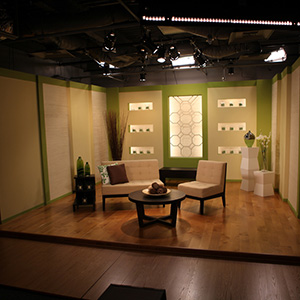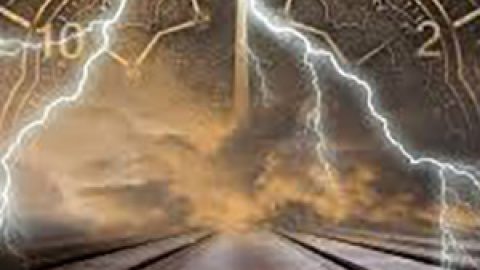Creative Writing: Environmental Storytelling
How Static Objects Can Tell A Story
Let’s take a moment to look at a surprisingly underutilized element of creative writing: the active environment.
Have you ever found yourself watch a movie, and one of those moments occurs when the camera enters a new scene for the first time? The camera pans slowly around the room, and the audience is presented with a collection of objects. No narrative takes place. There are no characters. Very little is in motion. Yet we find ourselves learning fascinating things about the character that inhabits the environment.
Most of us just absorb it and enjoy the moment this inevitably short bit of camera work creates, but as a writer, you should pay close attention. Very close attention. There’s a fabulously powerful technique that’s taking place here. The environment is telling you a story.
In my classes at UCF, this is one of the lessons that I try to instill on my students. I give them an assignment that has proven quite popular (and instructive) over the years. I provide them with an occupation and a couple of adjectives, and then instruct them to design a space that that character might inhabit. But to really hammer the point home, I provide a number of caveats:
- There can be no characters or dialogue in the scene
- I instruct the students to eschew adjectives that “interpret” the environment or attempt to draw conclusions for the audience. i.e. try to avoid describing the lighting as “gloomy” or “depressing,” or anything along those lines. It’s fine to describe something as cracked or worn or pristine. A casual observer could see that. Just don’t use adjectives that drive conclusions. (Yes, in fiction you can do this. But it’s a worthwhile exercise to start off without leaning on such things. The point of the assignment is to allow the objects themselves to do the bulk of the work)
- The environment must “tell a story” about its occupant. This story must have a beginning, middle, and future (or ending)
- Avoid over-reliance on text in the environment, meaning: if the character is an author, don’t have a bookshelf full of books on the subject of writing. Yes, a real author might have this. But if you allow yourself to take the easy solution, it’s actually must less immersive. Subtlety allows the audience to have an ‘epiphany moment’, which is much more satisfying.
- Only give a “snapshot” of the environment. In other words, don’t describe any sense of time, or give details over a passage of days, weeks, or months. Think of it in exactly the same way you’d see that camera panning in the movie.
- This isn’t strictly an exercise in creative writing, so don’t obsess about perfect phrasing. It’s about the objects themselves, and what they contribute to the story.
At first, they look confidently at this assignment, and are raring to go, but very quickly, they discover that it’s actually much harder than it seems.
We’ll get into the nuts and bolts of how to think about it momentarily, but for now, I’ll give you one of the better results. The student was asked to come up with an environment for an Arrogant, Newly Divorced, Bitter, Neurosurgeon. Here’s what he gave me:
The corner office is mostly barren save for a few choice pieces of furniture. A large mahogany desk paired with a leather office chair sits towards the back of the room. Next to the desk is an anatomical model of a brain on a stand. On the white walls behind the desk hangs a large picture of a man in his late forties receiving a plaque from Michael J. Fox. This same plaque, with engravings from the Michael J. Fox Foundation, is found hanging next to the picture, as well as a large diploma from Harvard University. Two simple chairs face the desk with a box of tissues close by and a picture of the same man next to Christopher Reeves in a wheelchair. On the floor is another picture surrounded by broken glass. It is a picture of the same man in a tuxedo embracing a woman in a white wedding gown. A half empty bottle of whiskey sits next to an empty whiskey glass, and at the bottom of this whiskey glass is a solid gold ring. Stabbed through the table is a scalpel, pinning another picture down. Three people in cap and gown are shown in the picture. Two of them are from the wedding photo, and the third individual has the scalpel plunged through his face. A computer monitor on the desk shows an unsent, half written email titled “YOU FUCKING JUDAS” with the name Derek marked as the recipient. Next to the keyboard, a contact book lies open showing the address of a Derek. Beneath, a mostly empty desk drawer is pulled all the way out. Inside, only an empty pack of cigarettes and three loose bullets can be seen.
I can’t express how fascinating I found this scene. The collection of objects presents us with a very clear story. Obviously a doctor, the occupant of the room fell in love with his college sweetheart. His best friend was the best man at his wedding. There was an affair between the best friend and the wife. The doctor found out about it. he’s angry, and contemplating violence.
There’s almost no text in the scene. No leading adjectives. No narrative. And yet a story with a crystal clear beginning, middle, and end has been provided. In purely technical fiction writing terms it isn’t great execution, but it almost doesn’t matter. The scene is intrinsically evocative. If we started an exercise in creative writing with the above jumble of objects as a set of notes, drafting the scene would be a LOT easier.
Let’s take a look at another example. In this one, the student was given: A bored, social climbing wannabe, secretary. Here’s what she turned in.
A desk sits close to the entryway of the room. The desk is “L” shaped and has a small counter connected to the top of it. Several thick padded chairs sit against the wall with an end table holding Business Magazine sitting in neat stack divides the chairs. The lights are all turned off including the desk lamp and overhead ceiling lights. Nothing sits on the counter of the desk other than a small metal plaque that reads “Stephanie Walker.” The desk itself holds a landline phone as well as a computer. A calendar reminder popup regarding a networking event hosted by Riverbed Technologies covers over google map directions to a local beauty salon. Several personal photos sit upon the desk including one of three young college girls in bikinis on the beach making triangles with their fingers. Another photo depicts two girls, one slightly older than the other, windsurfing with the Golden Gate Bridge in the background. Bright red lipstick labeled “Seductive Enchantress” lies cap-less on the desk. An iPhone 7 sits on the computer keyboard lighting up every few seconds. One drawer is slightly open and inside is a pile of rubber bands and what looks to be the start of a rubber band ball. The desk chair is tipped over and a red thong lies on the ground just under the desk. A bookshelf behind the desk has several books tipped on their side and a stapler sits on the ground with the staples spewed out on the ground. To the far side of the room is a glass wall and a door leading inside. A metal plaque on the door reads “Executive Manager Eric C. Sharpe”. The blinds on the other side of the glass wall are shut.
Although it doesn’t quite contain the breadth of the first example, these objects nonetheless give the audience an evocative scene. We know who this secretary is, we get insight into her motivations. We know where she is right now.
The reader hasn’t been ‘spoon fed’ information. This is one of the tips on writing you’re always being admonished about when you hear the classic “show, don’t tell” advice. In scenes like this, the reader is drawing their own conclusions based on the objects you choose to put in front of them. And it’s that sense of inference and discovery that makes environments so powerful
In the next example, the student drew an environment for an aggressive, paranoid, garbage collector. Here was the result:
A bright yellow safety vest lies bunched up on the floor. Shoe scuff marks mar the edge of an old dented coffee table. On the second-hand coffee table is a pair of thick brown work gloves set atop a National Enquirer with the image of a stereotypical alien shaking the hand of President Donald Trump. The caption reads “Trump Appoints Martian Ambassador.” An old style TV with antenna sits pushed against one wall of the living space. Foil is wrapped around each antenna of the TV and only static plays. The blinds over the window are closed and drawn even though the windows are also covered in foil. An end table holds a ceramic lamp that flickers on and off. The lamp looks as if it was pieced back together with glue and lacks a lamp shade. Next to the lamp is a page-a-day calendar with Tuesday January 20th showing. The couch has a faded floral pattern that is reminiscent of 70’s wallpaper. A light dusting of white powder and small pieces of plaster speckle the couch. The directly behind the couch has a fist size hole. On the floor lies a map of what looks to be a suburban area with different colored lines drawn from one central location to different areas of the map. The key on the map shows that each color corresponds to a different day of the week. The Tuesday line is highlighted.
Again, we have an interesting character portrait comprised of nothing but static objects. Now, we are left to speculate what’s about to take place. Clearly we have an unstable, obsessive compulsive, blue collar worker. He or she is violent, and seems prone to conspiracy theories. The Enquirer article leads us to believe that perhaps this maniac is considering an assassination attempt. We don’t have all of the information to form a solid conclusion, but sometimes the ominous implied threat is even more interesting. Again, notes like this make the ensuing effort in creative writing a relative breeze.
Finally, a student rendered an environment for a Washed Up, Bitter, Retired Cop.
There’s a room solely lit by a dim, bare lightbulb, hanging by a chain. An empty shoulder-holster hangs from the rack, along with a ratty leather jacket. The room is primarily occupied by a large square table. Several cups of unfinished coffee and Styrofoam carryout boxes are clustered in one corner of the table. All are in various states of moldy decay. A collection of newspapers are scattered about the table. Each features a front-page photograph. Some are of an elderly policeman handing a badge to an elderly man in a suit in front of a tall brick building with stone pillars. Others are of the same two men shaking hands and smiling. In each photograph, members of the crowd are applauding. The elderly policeman’s face has been circled in red marker in every photo. On one wall of the room, several framed photographs hang. One photo features a mid 30’s version of the elderly policeman and young blonde officer. Both men are standing, arm in arm and smiling, behind a large pile of cocaine parcels. Another photo is a group photo of 15 extremely young looking policemen and women, two of whom are the arm-in-arm men from before. Everyone is smiling and holding a framed piece of paper. Next to the photo is a framed diploma from a police academy. A box of ammunition sits on the center of the table, with several loose bullets scattered around it. A worn police badge sits atop a neatly folded piece of paper.
Here we see the police officer’s life on display. We see him graduating from the academy, making high profile busts, getting awards, and retiring. We see a happy, fulfilled life. Yet the badge atop the note, the empty holster, and the bullets add a dark twist. Somewhere around here, we’re bound to find the body. Clearly, this officer’s life has ceased to have meaning since retirement.
In all of these examples, the student had to grapple with a challenge. They had to tell a story in a static way. And what they all learned was that you can’t do this without a bit of up-front planning.
To do something like this correctly, you have to have the story in your head first. You have to understand the character’s past, present, and future plans. It’s usually a simple story, like with the newly divorced neurosurgeon, but it’s evocative: people who are contemplating suicide or violence; people who have having an affair; someone who is obsessed. These are strong stories and emotions that a reader can identify with.
Once you know what your character’s simple story is, then you have to walk a mile in that character’s shoes. Imagine the trail of breadcrumbs they would leave as they go about their daily lives. Much of this trail would be innocuous, and you would leave it out of the collection of objects, but some of it would be much more meaningful. Those are the things you have to zero in on. Don’t just settle for things that give a static glimpse of personality. Tell a story that spans time. Show us who this person is, where they came from, what they’ve experienced, and what they’re thinking/doing now.
Once you’ve jotted down your collection of objects, let someone else read it. See if the objects tell the story you were imagining. It will take a bit of practice, but when you can learn to let the objects tell the story, it makes a wonderful tool to add to your creative writing toolbox.










